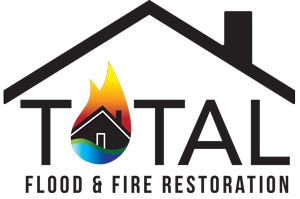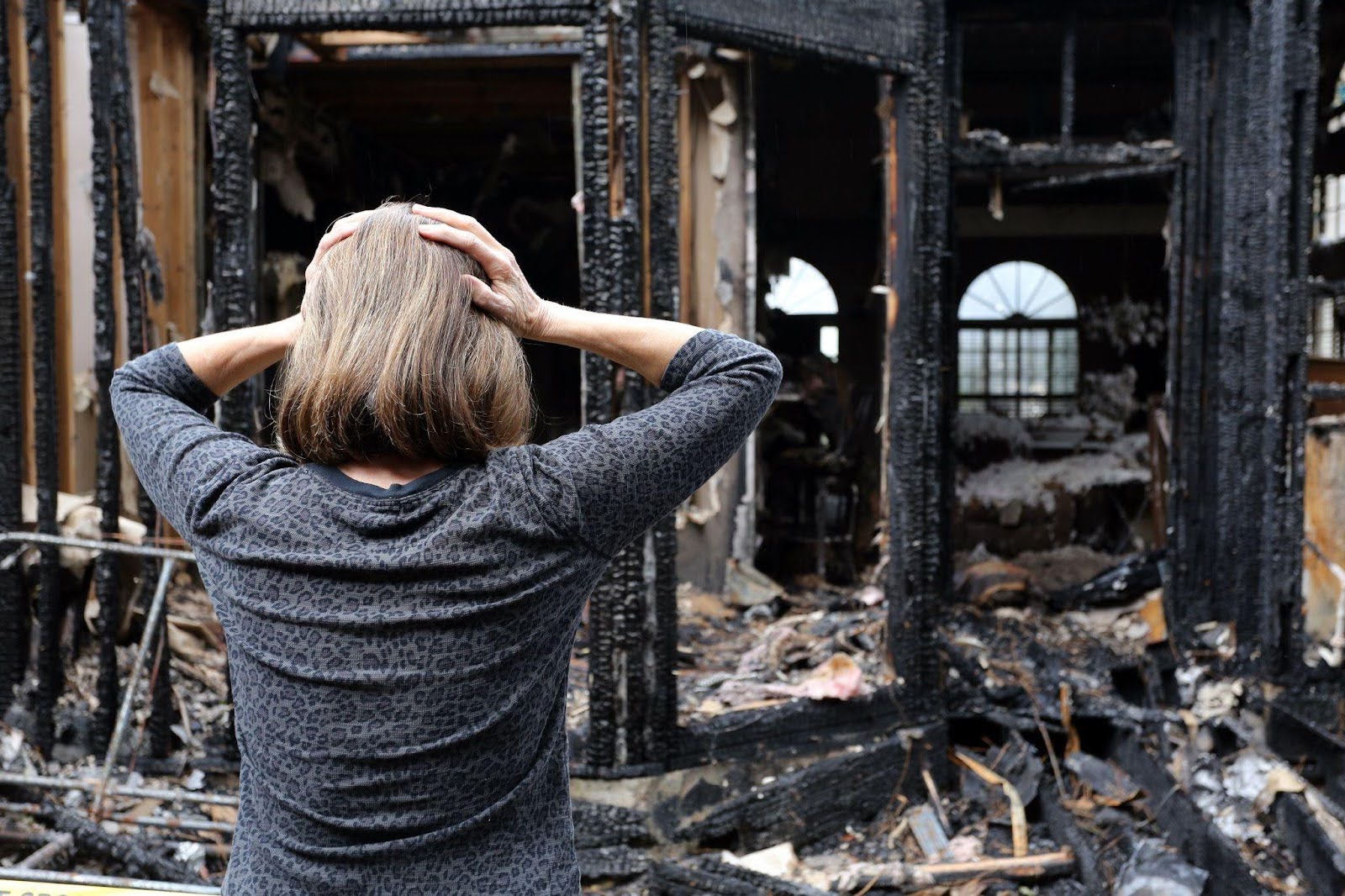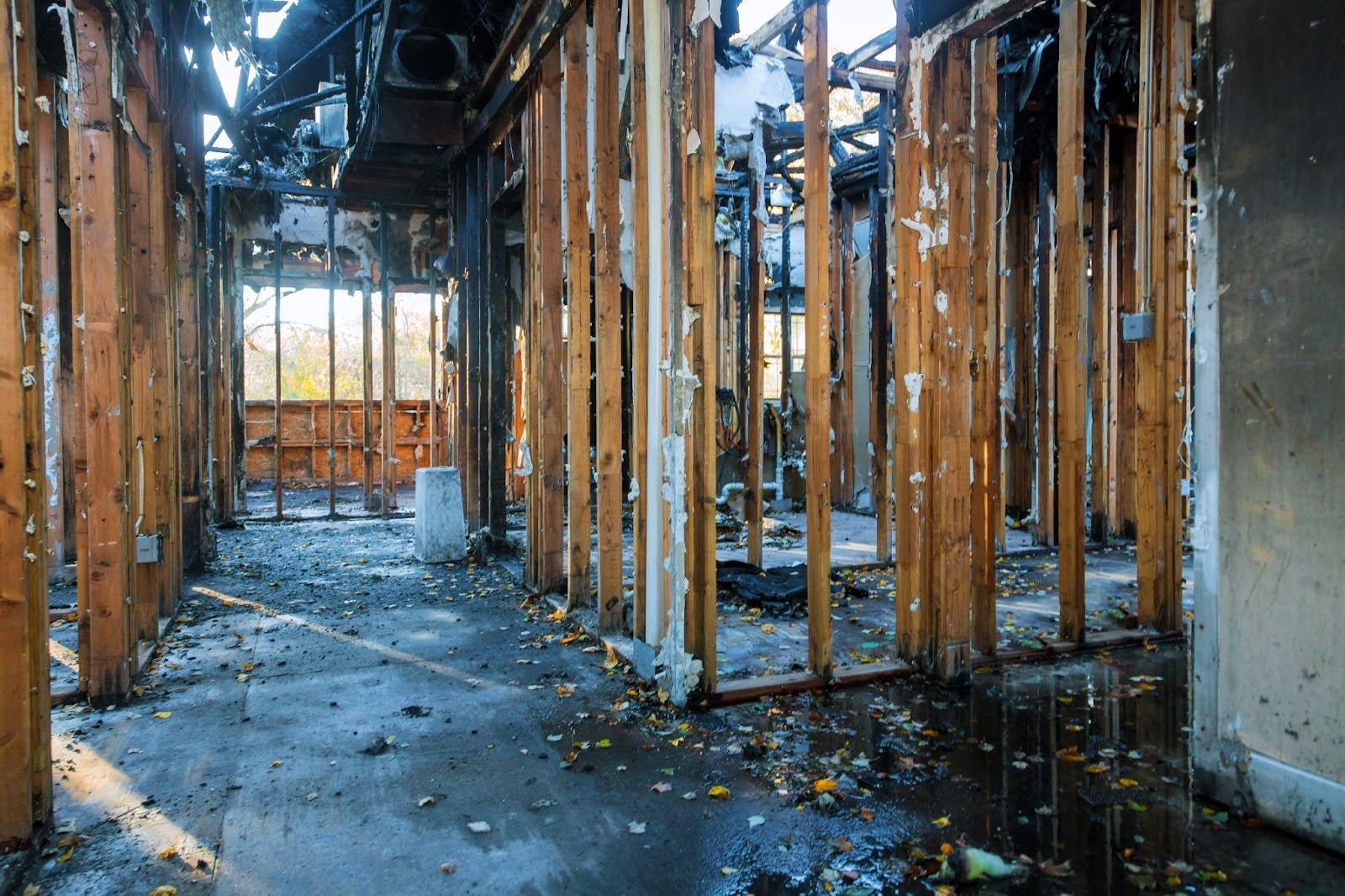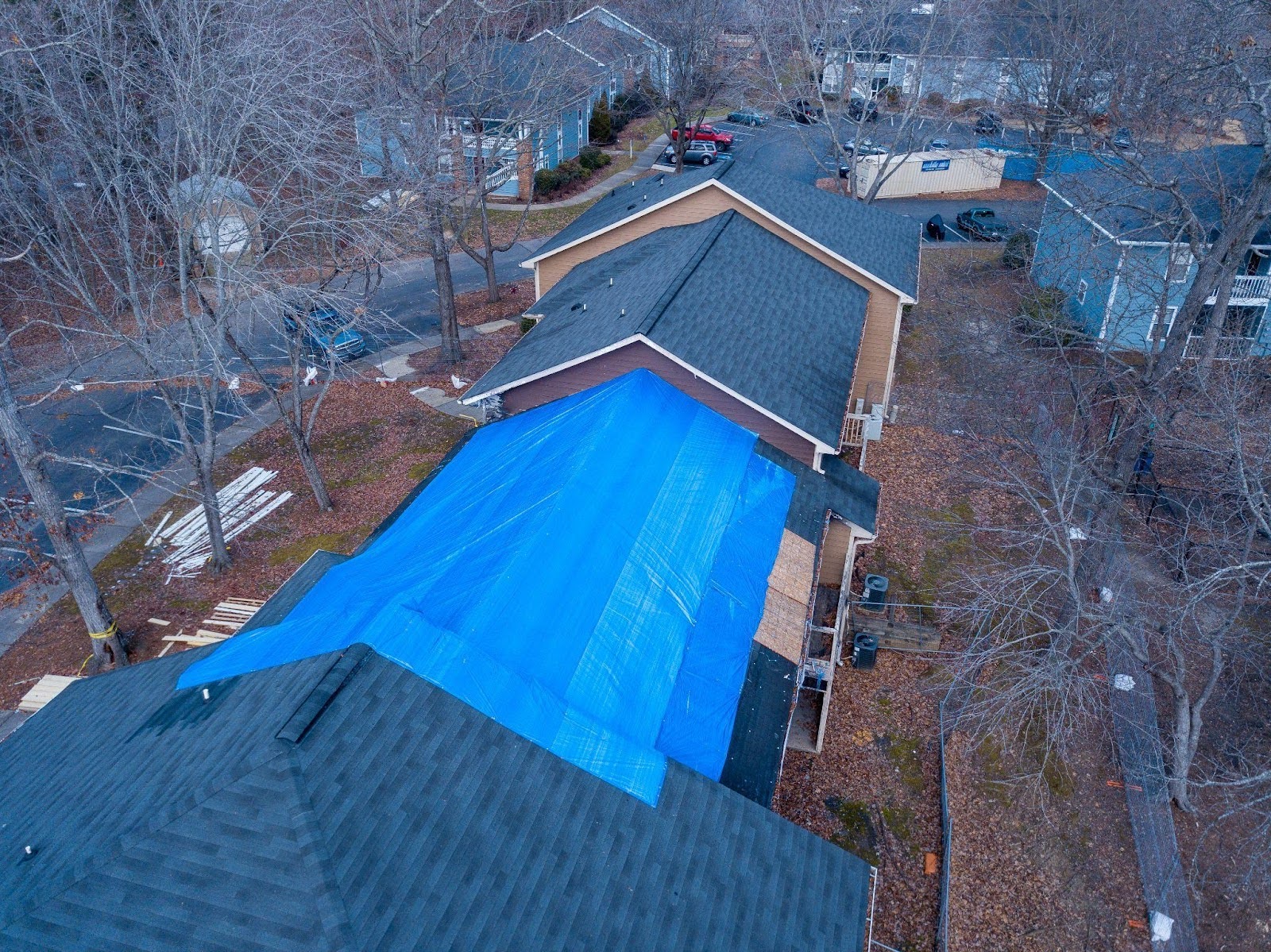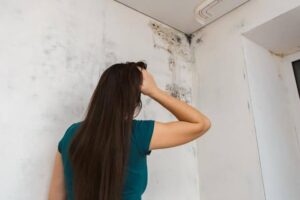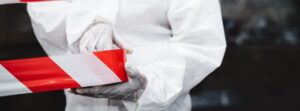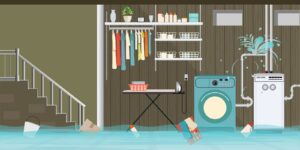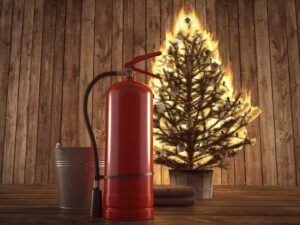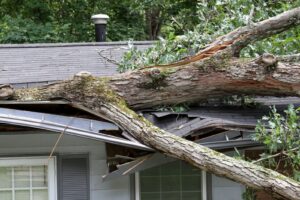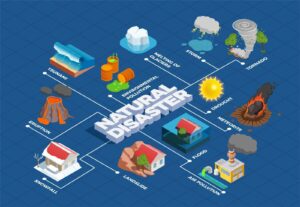A house fire is one of the most devastating events a homeowner may face, from the fire damage to the long cleanup process. Plus, it goes beyond the visible damage; the emotional toll and overwhelming aftermath leave families unsure what to do next.
After the fire departments come, the flames are out, and everyone is safe, the real work starts. Smoke, soot, and water damage create a hazardous and unstable environment. Recovery lies in following a clear plan for house fire cleanup.
This guide outlines 12 steps after a fire, from the first phone calls to long-term prevention.
Step 1: Prioritize safety first
Before stepping foot into your home, wait until the fire department or a licensed inspector confirms it’s safe. Fires can leave behind hidden dangers, such as unstable structures, smoldering debris, and toxic soot.
Even if things look okay on the surface, remember the damage often runs deeper. Heat and water weaken floors, ceilings, and walls. If gas, electricity, or water were shut off during the emergency, leave them off until a professional checks for damage.
You may be eager to get started on house fire cleanup, but safety always comes first.
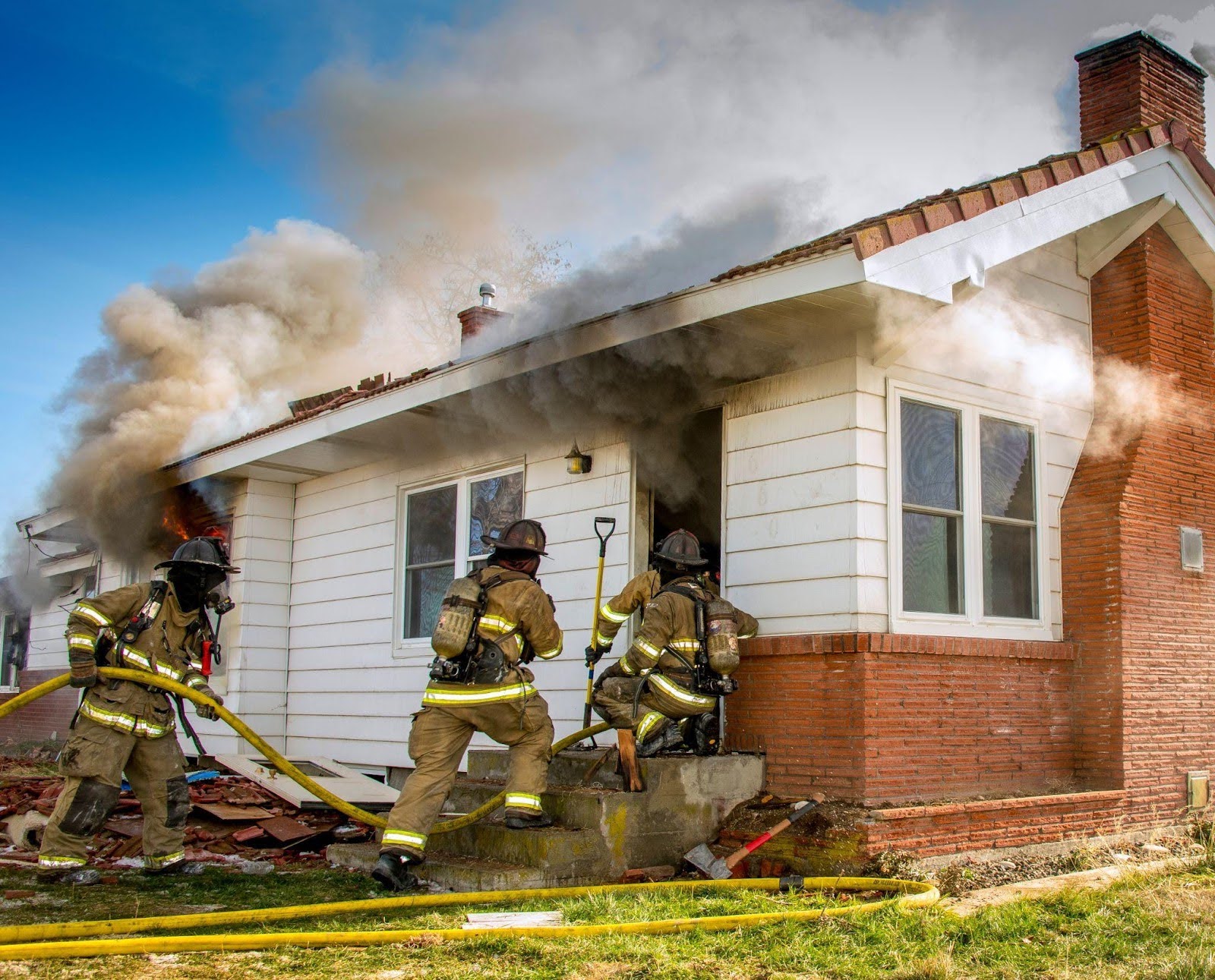
Step 2: Call your insurance company and start documentation
Once everyone is safe and the fire is out, the next step is to contact your insurance company. The sooner you file a claim, the faster the recovery process begins.
They’ll assign an adjuster to assess the fire damage. Meanwhile, take your own photos and videos — document structural damage, lost belongings, and anything else supporting your claim. Keep a list of damaged items, receipts if available, and hold onto anything questionable until your adjuster sees it.
While your insurance company won’t handle the damage cleanup, they’ll help cover the costs. Starting this process early will make everything smoother as you move through recovery.
Step 3: Secure your property to prevent further damage
Now that you’ve contacted your insurance company, it’s time to protect what remains of your home. Even if the fire didn’t destroy your entire home, it still leaves openings like broken windows, roof damage, and missing doors that expose it to weather, pests, and even theft.
Work with a licensed restoration company or contractor to board up windows, tarp damaged areas, and seal off openings. This step helps protect your belongings and reduce the risk of additional damage by fire that could complicate insurance claims.
If your home is deemed uninhabitable, remove any valuables and secure the premises to the best of your ability. In many cases, your insurance may help cover temporary housing and the costs of protecting your home from further loss.
Step 4: Get a professional assessment of the fire damage
Before you roll up your sleeves and begin any house fire cleanup, you need to know precisely what you’re dealing with. Fire damage is often deceptive — what looks like surface-level soot or discoloration could signal deeper structural or electrical issues.
Bring in a licensed restoration expert to inspect your home. A professional assessment helps plan repairs and supports your insurance claim. If you’re working with a cleanup company, they’ll use this evaluation to build a complete restoration plan.
Step 5: Begin the house fire cleanup process
Once the damage assessment is complete, you can begin the cleanup process. This is often the most physically and emotionally challenging part. Don’t hesitate to bring in a professional team for help.
The process typically begins by removing debris, damaged materials, and unsalvageable items. From there, it moves into smoke and soot removal, deep cleaning, odor control, and addressing water damage caused by firefighting efforts.
Use professional-grade equipment, such as air scrubbers, HEPA vacuums, and industrial deodorizers, to remove contaminants and restore air quality.
Step 6: Sort, document, and salvage personal belongings
As cleanup moves forward, it’s time to go through your belongings. Identify what is cleanable, restorable, or replaceable. Many items may look lost at first glance but are salvageable with proper treatment, especially valuables like photographs, furniture, electronics, or documents.
Make a detailed inventory of everything you remove from the property. Take clear photos, note serial numbers when possible, and set aside receipts or warranties. This record will support your insurance claim and help determine what’s eligible for replacement or repair.
Avoid DIY cleaning for items affected by smoke or water unless you’ve received professional guidance. Improper handling may make damage worse or spread contaminants. A good fire damage cleanup company can assist with pack-out services — carefully cataloging, removing, and treating your items off-site.
Step 7: Clean the air and your HVAC system
After a fire, smoke and soot settle on surfaces and seep into the air and your home’s ventilation system. If not properly removed, these particles continue circulating, posing long-term health risks.
Start by ventilating the home to flush out lingering odors and contaminants. Professionals use tools like HEPA filters, air scrubbers, and ozone machines to safely remove microscopic particles from the air and neutralize smoke odors. Schedule a professional HVAC inspection and cleaning to remove residue.
Step 8: Address water damage and prevent mold
It’s easy to forget that fire damage comes hand-in-hand with water damage. Firefighters may have used thousands of gallons of water to put out the blaze, and that moisture doesn’t disappear on its own.
Trapped water leads to mold growth within 24 to 48 hours. Moisture weakens flooring, drywall, and wood framing, turning what feels like minor damage into a serious structural issue.
For more on mold cleanup review, visit epa.gov for proper remediation.
Step 9: Start the repair and rebuilding process
Once the home is safe, it’s time to focus on restoration. Depending on the extent of the damage, this step often includes structural repairs, electrical rewiring, drywall replacement, flooring installation, and repainting.
If you’ve hired a fire damage cleanup company that offers full-service restoration, they often manage both cleanup and rebuilding, streamlining the process and reducing delays.
You can make updates or improvements during repairs, like upgrading materials, improving energy efficiency, or enhancing fire resistance. If your insurance policy includes coverage for “like-kind and quality,” be sure to ask your contractor how that might apply to finishes and features.
Step 10: Track your progress and keep good records
Keep detailed records throughout recovery to save you time, money, and frustration. From insurance paperwork to repair estimates and invoices, organize every document in one place, either digitally or in a dedicated binder.
Include receipts for hotel stays, meals, clothing, emergency supplies, and anything you had to pay for because your home was unlivable. These costs may be reimbursable under your homeowner’s policy if properly documented.
Make note of who you spoke with and when, whether it’s an adjuster, contractor, or fire damage cleanup team. Jot down summaries of conversations, agreements made, and deadlines discussed. Having a paper trail helps avoid miscommunication and gives you a strong position if questions arise later.
Step 11: Plan ahead to prevent future fires
Once the dust settles, take the opportunity to make your home safer for the future. While no one can prevent every accident, there are ways to reduce the risk of future fire damage.
Consider installing a monitored fire alarm system or a residential sprinkler system. For added protection, use fire-resistant building materials like metal roofing and treated siding.
Review your fire escape plan with your family. Keep fire extinguishers in key areas — kitchen, garage, laundry room — and ensure everyone knows how to use them.
For more on how to prepare, visit ready.gov for how to respond to emergencies like fires.
Restore your home with Total Flood & Fire Restoration
Recovering from a house fire is rebuilding walls while restoring your sense of security, comfort, and peace of mind. The fire may be over, but recovery takes time, patience, and a good team by your side.
At Total Flood & Fire Restoration, we specialize in fire damage cleanup — from emergency board-up and smoke removal to full-scale house fire cleanup and reconstruction. We understand the emotional and practical challenges you’re facing, and want to make the process as smooth as possible.
Whether you’re beginning cleanup or navigating the final steps of restoration, we’re ready to help — 24/7. Let us handle the fire damage, so you can focus on moving forward.
Need help now?
Give us a call anytime for a free assessment and fast, expert service.
